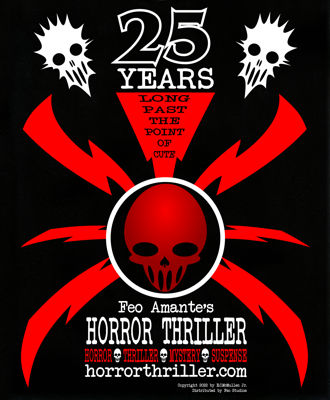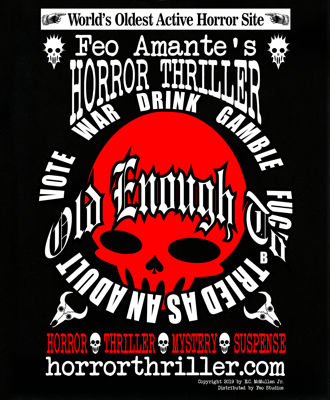 |
 |
Review by David Whitman |
|
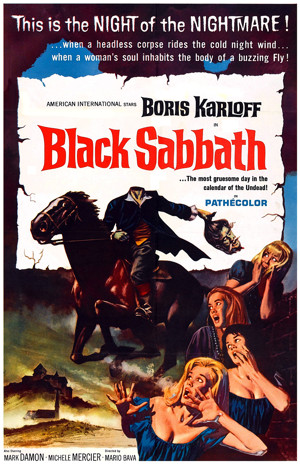
BLACK SABBATHakaI Tre volti della paura- 1963USA Release: May 6, 1964 Galatea Film / American International Pictures |
|||
It is criminal that the late Italian director Mario Bava's film BLACK SABBATH is virtually unknown in the United States, especially when you consider that it is one of the most effective horror movies ever made. First released in 1963 under the title I tre volti della paura (The Three Faces of Fear), BLACK SABBATH scared Italian audiences silly. It was also handpicked by the director as the favorite of all his works.
This lushly photographed film consists of three tales: The Telephone, The Wurdulak, and The Drop of Water. Bava was inspired by Roger Corman and his Poe films and wanted to do something similar. Instead of looking toward Poe, Bava decided to mine other sources, most notably Chekhov and Maupassant. Don't try to look for the original stories, though - all of them are very loosely inspired. Just look at the story "The Telephone". It was supposed to have been inspired by Maupassant, yet the author died in 1893 before the use of the telephone.
Truth be told, I am not very happy with "The Telephone", the first tale of the film. Although it is very effectively directed, it is ultimately predictable and contrived. It's basically one of those escaped psycho stalker tales, something we've seen far too much of. Bava does manage to mine some suspense from the premise, especially with his use of the ringing phone. To be fair, this premise was probably much fresher in the early sixties than it is now. It stars Michele Mercier (WEB OF THE SPIDER, better known for her role in Truffaut's SHOOT THE PIANO PLAYER) as the victim and she is pretty damn good at looking genuinely frightened. At the very least this segment is entertaining, even if it is not up to par with the rest of the film.
TRIVIAThe coda of the film is a bit of a surprise. It's jokey, but it is just the right thing to do after scaring you witless. It involves Karloff, a very fake horse, and some extras. I laughed out loud. As far as I know, this ending was never shown in the United States. It was added to the DVD version. RESOURCE |
The second tale is "The Wurdulak", and what a triumphant piece it is. Not only are there genuine chills to be found throughout this 30 minute mini-movie, it is probably one of the most effective performances of Boris Karloff (FRANKENSTEIN, THE GHOUL, BRIDE OF FRANKENSTEIN, ISLE OF THE DEAD, BEDLAM, HOUSE OF FRANKENSTEIN, THE RAVEN, THE TERROR, A COMEDY OF TERRORS, DIE, MONSTER, DIE!)'s career.
Karloff's role as the patriarch of a close-knit family who may or may not be a vampire is chilling and eerie. Based very loosely on a story by a Russian Count by the name of Alexei Constantinovich Tolstoi ("La Famille du Wurdulak"), the story tells of a vampire that has been ravaging the countryside.
It is said that the vampire especially feeds on those that it loved most when alive.
The next thing the viewer will notice about this segment just how brilliant Bava's use of color is. Colors stand out with psychedelic detail. Everything you see is photographed with a painter's eye - the moonlight blue cast of the fog, the orange-yellow glow of the window from the darkness, the bone-white little boy in the mist looking for his mama and shouting "I'm cold!" (I've always found spectral children especially creepy). I think that "The Wurdulak" is a gothic masterpiece and you can see Bava's influence on Tim Burton's art direction in the lesser film SLEEPY HOLLOW.
Finally, we come to "The Drop of Water", the most effective piece in the entire film. Structurally, this story will be very familiar to those of us who grew up on EC comics. It's the typical corpse-comes-back-from-the-dead-to-seek-revenge tale. In Bava's hands, however, it goes to another plain.
The plot is this: A nurse is called upon by a maid (Milly) to dress the corpse of a medium that supposedly died during a seance. The dead woman appears to have been wealthy and lives in a luxurious and ultra-creepy gothic mansion, complete with roman columns and dozens of cats. The nurse, Helen Chester, played to perfection by Jacqueline Pierreux, spies a ring on the corpse's finger and pockets it. Typical stuff, eh? Just wait until you see this corpse.
When I first saw this corpse as a child I promptly burst into tears. I was sent from the room with this ominous phrase from my mother: "No more horror movies for you!" (Thankfully, mom reneged on that promise) The corpse mask itself was created by Bava's father Eugenio and I would venture to say that it is one of the most effective pieces of make-up in the history of the horror film. If you don't get a chill when you first see it, then you are one desensitized bastard, heh.
Bava knew how effective the corpse was too, because he used it to burn one horrifying image after another into your psyche: Sitting in a rocking chair with her cat, decked out on a canopy bed with a rigid rigor mortis grimace, literally gliding towards the victim as if on air - each one sent the goosebumps up and down my spine even as I watched it with adult eyes.
You would benefit if you sprung thirty bucks and bought the DVD instead of the VHS version. Bava's use of color is especially evident on the re-mastered version - you will be amazed. Roberto Nicolosi's score is very effective when it blares at you with digital sound. It will also cause you to wonder why in the hell they replaced this score with a far less effective one by Les Baxter in earlier American versions of the movie.
The Italian directors knew how to make a horror film. They understood that it was okay to take your material seriously, you did not have to wink and grin ironically. Many American horror directors seem to be afraid of appearing pretentious and taking chances. Now that the age of irony seems to be officially over, it is my hope that audiences start to embrace films like BLACK SABBATH. Perhaps the future of horror can be seen in the works of Bava, Argento and their ilk. I sure hope so.
3 Shriek Girls



This review copyright 2001 E.C.McMullen Jr.

|
| DRESS NICE | |
| YOU MIGHT ALSO ENJOY (Sub-Section: OLDE WORLDE VAMPYRS) |
||
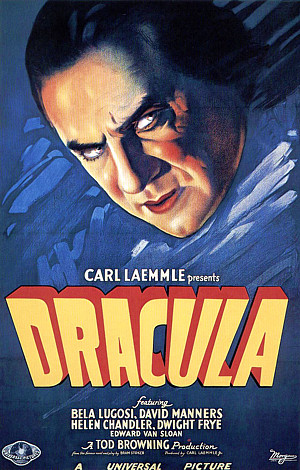 |
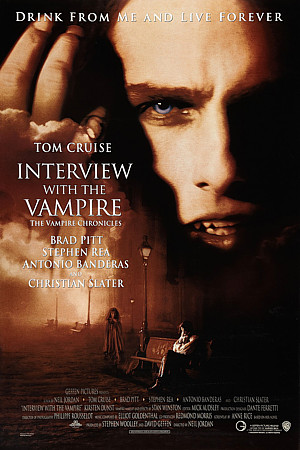 |
 |
| DRACULA - 1931 MOVIE REVIEW |
INTERVIEW WITH THE VAMPIRE MOVIE REVIEW |
Bram Stoker's DRACULA MOVIE REVIEW |
FEO AMANTE'S HORROR THRILLERCreated by:E.C.McMullen Jr. FOLLOW ME @ |
| Amazon |
| ECMJr |
| Feo Blog |
| IMDb |
| Stage32 |
| Twitter X |
| YouTube |
| Zazzle Shop |
